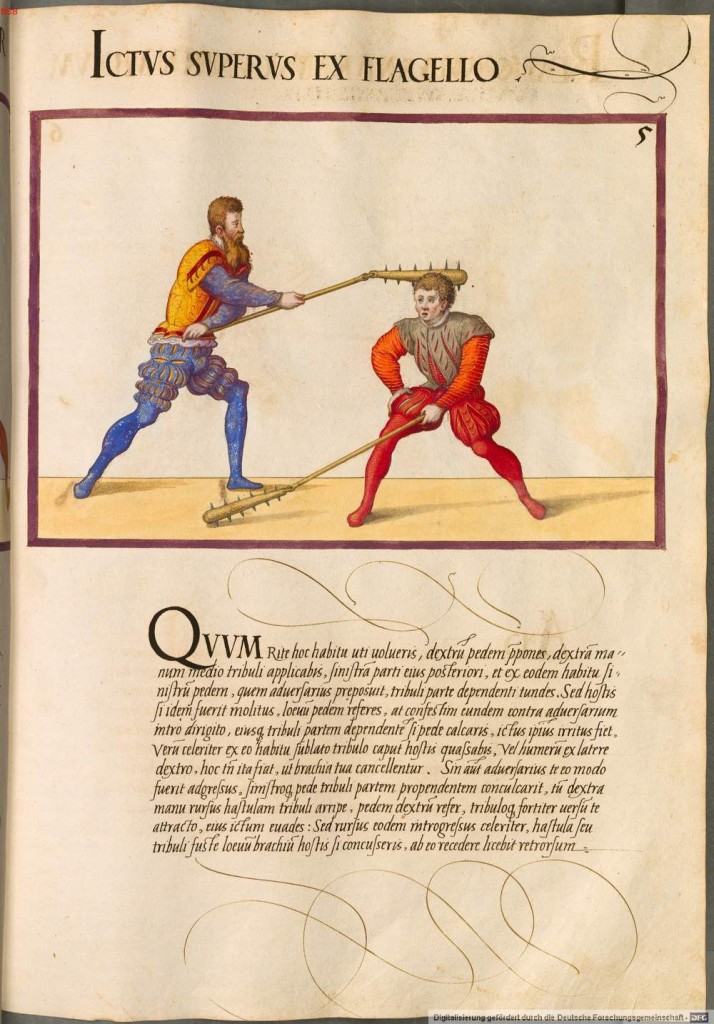Translation by Rachel Barkley
High Strike from the Flail
Rightly here you will have wished to use this position. You will plant forward the right foot, you will apply the right hand in the middle of the flail, the left hand on the lower end, and from this position you will strike with the hanging part of the flail the left foot which your enemy has placed forward.
But if your opponent has attempted to do the same, you will draw back the left foot and immediately direct the same foot inside against the enemy, and if you will have[1] stepped on the hanging part of his flail with your foot[2], that blow of his will become useless. Quickly from this position with the flail raised you will strike the head of your enemy or the shoulder from the right flank, so thence let it be that blow so that your arms are crossed over.
If your enemy attacks you in that very manner, and he has trampled on the hanging part of the flail with the left foot, seize the body of your flail again with the right hand[3], pull back the right foot, and strongly with the flail having been dragged back, you will evade his blow. But quickly if you will have, pursuing again with the same manner, struck either the flail body[4] or the left arm of your enemy with the body of the flail[5], from here it is permitted to retreat backwards.
Notes:
[1] “If you will have” is an approximation of an odd verb form used frequently by Mair. The translator curses the Medieval doggerel that passes for Latin
[2] If Agente’s blow is truly directed at Patiente’s foot, it should come to rest close to where the foot was, most of its force being downward into the ground, and a quick return of Patiente’s foot will land on top of the flail head.
[3] There is no instruction to release the body of the flail with the right hand preceding this. It may just be a “grip more firmly”
[4] The butt-spike
Interpretation by Owen Townes
Setup:
Agente:
Medium grip, right foot forward, no guard specified
Patiente:
Left foot forward, nothing else specified
Play:
Agente:
Onside unterhau to Patiente’s left foot
Patiente:
Withdraw left foot without passing it back
Return it back onto Agente’s flail-head
Offside oberhau
Agente:
Withdraw right foot and body to void, pulling strongly on staff to dislodge
Pass right foot forward and strike Patiente’s left arm or body with butt-spike in thrusting or slashing motion
Observations:
The onsided-ness of the opening Unterhau is based on the illustration and mechanical ease, though the text is actually silent as to which side is struck from in this instance.
Both parties rely on voids for defense. Up to this point we’ve seen defense via
This illustration shows one of the two instances of the over-over grip. In this case, with a blow starting high, the required hand position to conclude as illustrated is awkward and exposes the left arm to a strike. My interpretation is this resulted from the model shifting his grip due to fatigue

Leave a Reply